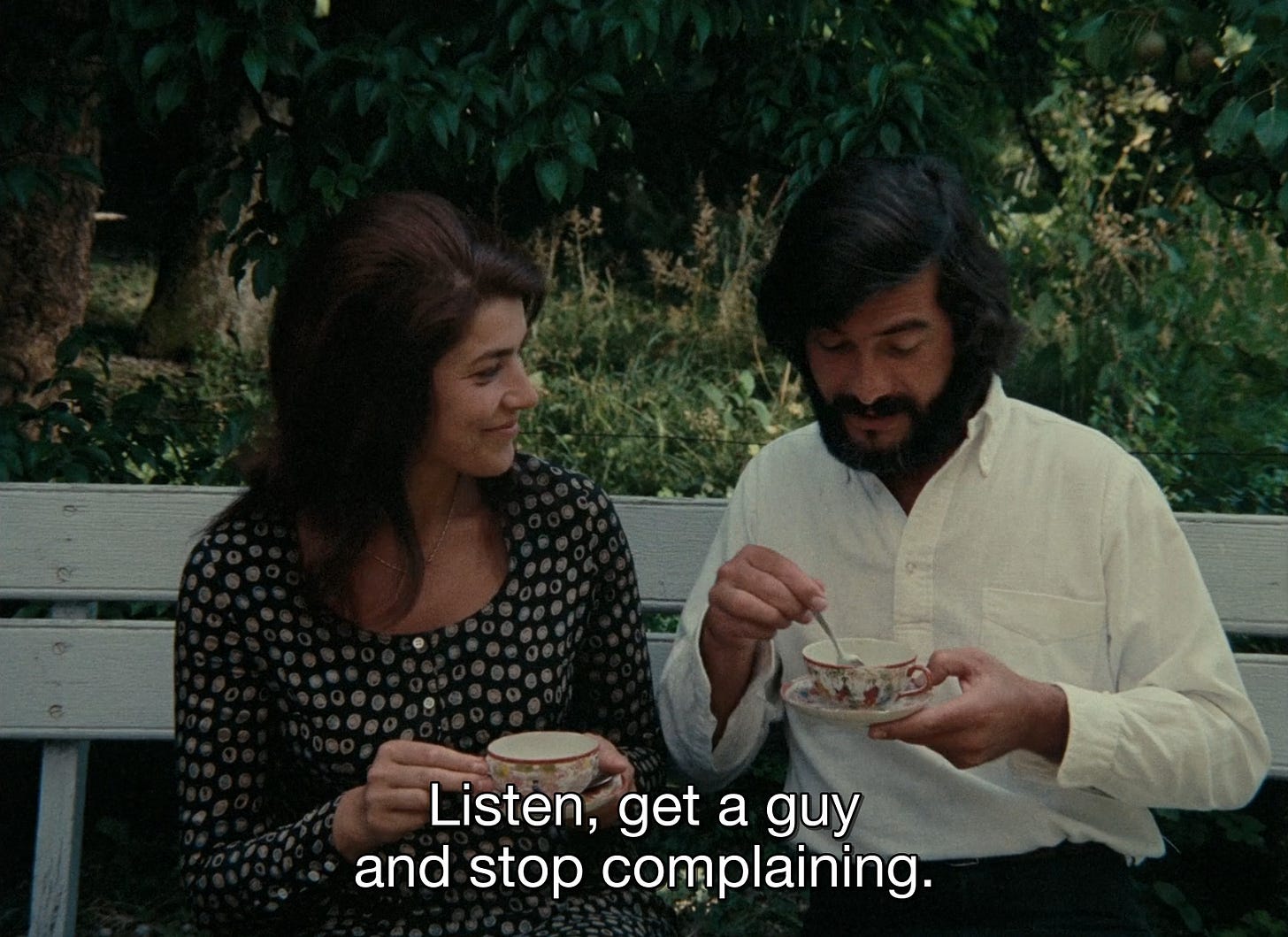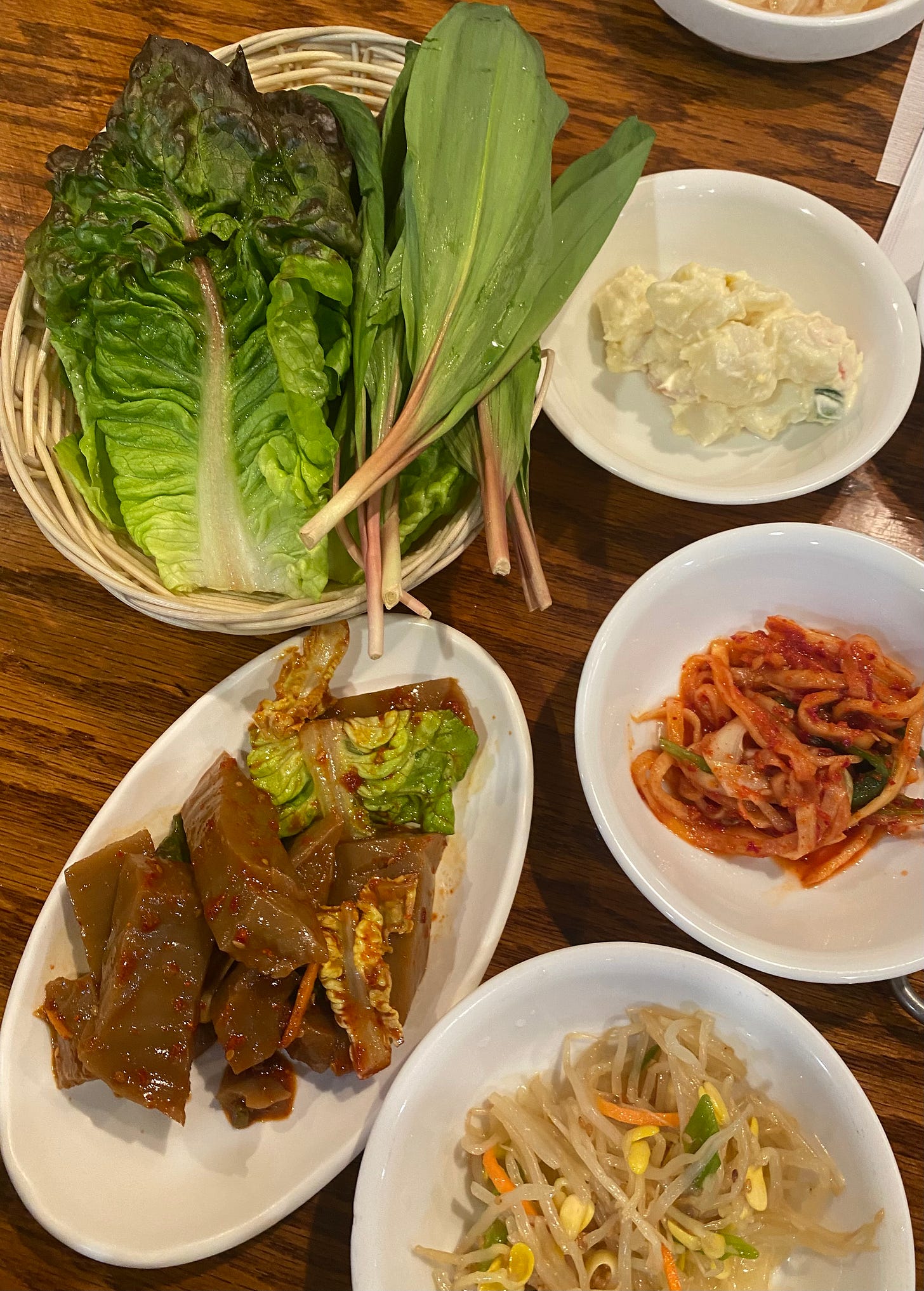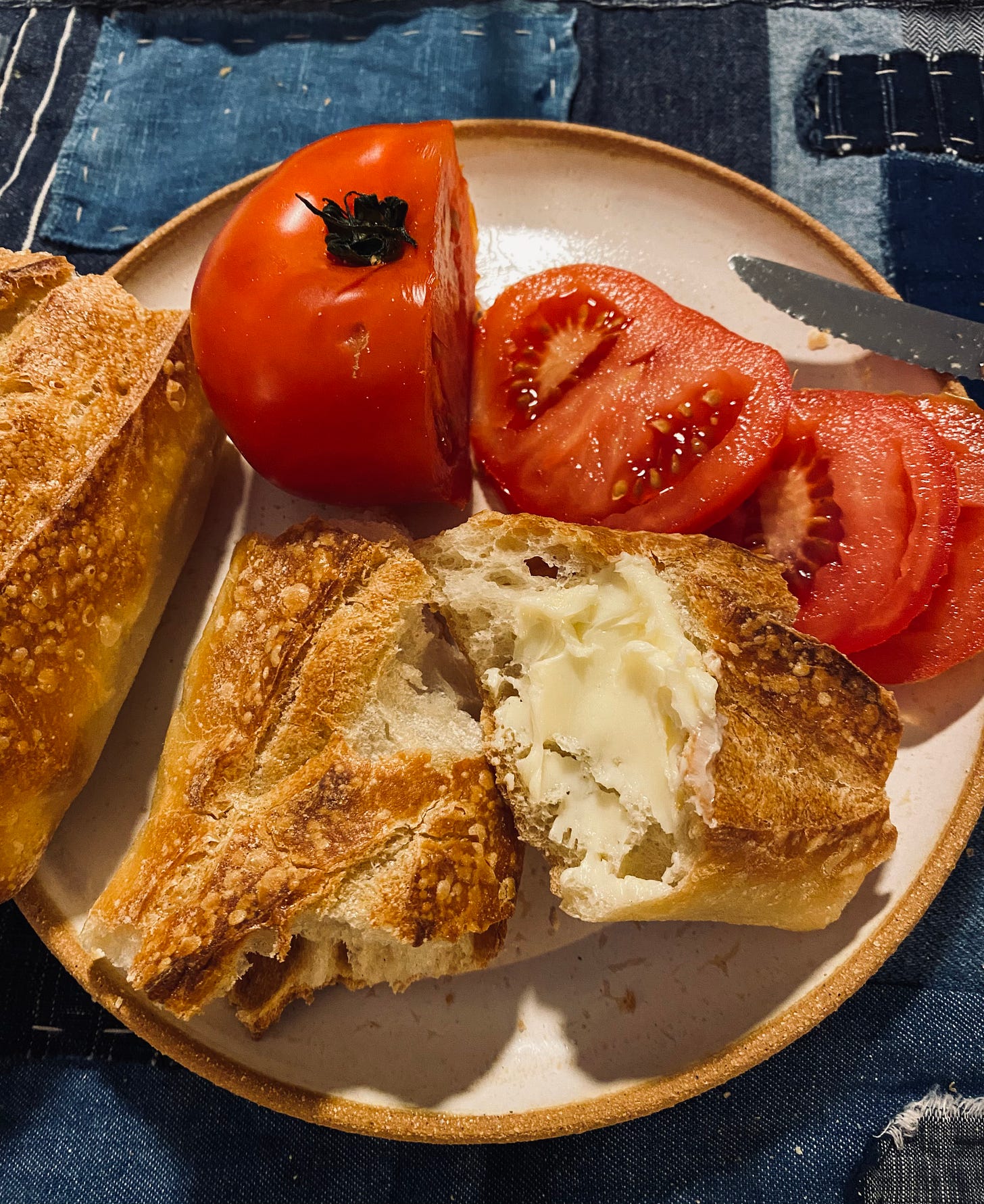You asked, I listened. A majority of you wanted shorter, more frequent posts so here I am. My sympathies to at least one of you.
in this issue
i. claire’s knee
ii. things i ate
iii. a tale of springtime
off newsletter
1. on Juliet Berto’s debut Neige, a night-life infused portrait of resistance on the margins
2. my interview with Greta Lee about her new movie Past Lives
Today is June 29, a date that lives in revered anticipation for cinephiles marking the Rohmer summer season. It appears as a date-setting title card in Claire’s Knee (1970), a fictional tale about a freshly engaged man (Jean-Claude Brialy) trying to remain faithful despite his proximity/attraction to two younger women, while being lightly goaded to cheat by a third, his age-appropriate writer-friend looking for book material. The moral tale is French New Wave director’s most lauded film and also a fitting introduction to him. The conventional wisdom about saving choice cuts for last doesn’t hold true here. Any potential disappointment that might collect when starting the best and embarking on the rest are extinguished when watching Rohmer’s body of work: every film is a gem, distinctly faceted, that reflects and appeals to you differently over time.
When it comes to Claire’s Knee, a more perfect inauguration and encapsulation of warm weather—bare shoulders, afternoons fat with abundance—and all its attendant possibility, does not exist. The pace of the film, matched to the season, is fetchingly languorous and the images unself-consciously beautiful. The emerald of trees, the layered blues of lake and sky, the glint of orchard fruit, and the quiet of a country house, all famously inspired Luca Guadagnino’s Call Me By Your Name.
But unlike that film, tinged with the capitalist aroma of travel fantasy, Rohmer's feels more grounded, accessible in its evocation (even if it isn’t; I know nothing of the costs of staying at Lake Annecy), and profound without being indulgent, even when its characters talk, and talk, and talk, as they are wont to do.
Attuned to feelings, their dialogue circles desire with an approachably philosophical bent that lends the film its dramatic pulse. Will they, won’t they, and why, or why not, all spoken out loud. These are not preening monologues meant to impress others but ways of excavating one’s own motives, an assessment of one’s own interiority, not an attempt to court outside favor.
Rohmer felt green was essential to Claire’s Knee, his second film in color. Accordingly, a list of green things I happened to eat last month.
The pistachio pie at West Taghkanic Diner is a treat best served old, for breakfast the next day chilled from the fridge. By then the brittle crumb crust (Biscoff, perhaps?) has had time to soften—though its immense sweetness remains. As relief: a cloud of cream whipped, sugarless and flavored with vanilla bean, on top.
The best matcha latte I’ve ever had in NY is made with coconut milk, referred to as a thicco from Wild Rabbit Coffee
Matcha ice cream from Alec’s is pleasurably bitter, extra creamy, and studded with chocolate chips. My stomach proudly takes to dairy, but those with a more discriminating gut will be pleased to know that these frozen desserts are easier to digest, on account of special A2-gene carrying cows. Perhaps that’s what accounts for its supremely desirable consistency, alluringly supple with a bouncy resilience. (The California-based brand is also the first to use regenerative farming practices, making this an earth-minded treat, too.)
Ramps, the urban forager’s favored allium, proves suited to better uses than pesto as
Arancine from Hare Hollow, a roving pop-up I encountered at Rose Hill Farm
Korean BBQ accouterments at Kim Chayul’s Myung Poom Kalbi, an unexpected yet totally tailor-made match in culinary heaven.
My foray into handmade nettle fettuccine proved unproductive. The blanched nettles lose their potency, and the noodles (like all vegetable-augmented pasta) loses excitement as it gains a bit of healthful panacea. Cooking nettles into frittata is a more worthy exercise, and easier, too.
Due to an absence of fava beans I’ve not yet made the most perfect spring pasta. If you’ve seen them at your greenmarket, send me a tip!!!
That the mint and cilantro chutney at Rowdy Rooster in the East Village stains your clothes bright green allows it a place on this list, but mostly I’m including it as a means to talk about the impeccably spicy Indian fried chicken that it supplements. Beware: in the small shoebox space, I heard an NYU student render his level-2 sandwich inedible, while the kid next to me’s sinuses got the clearing of a lifetime. I was quite pleased with a 3 out of 5, but dare not go higher.
A TALE OF SPRINGTIME
Eric Rohmer, 1990
The dynamics of cohabitation and coupling turn into a philosophical meditation, characteristically Rohmerian, on place and space as interior feelings are transmuted to opinions on how to relate to physical surroundings.
A lover needs some private space; as when Jeanne (Anne Teyssedre), the teacher, self-sexiles herself when her cousin’s boyfriend pays a visit to their shared flat. Hyper-aware of the square-footage she occupies IRL and in her mind, she reluctantly accepts an invitation to stay with Natacha (Florence Darel), a young university student, at her flat, and later her family’s country home.
Spaces are sacred; as when Natacha reproaches her father’s young girlfriend, her presence never more appalling than in the former family home; or when Jeanne cannot stand her own boyfriend’s apartment, so disorderly it causes her to question the foundations of their relationship.
Natacha, trying to set up her father and Jeanne, leaves them to buy groceries while they ready the appetizers: tomatoes, saucisson sec, and olives, which are all eaten with fork and knife on a plate. How amusing and dainty!
I had a distinctively French dinner of tomatoes, bread, butter, and wine inspired by the film. (Specifics: a wan nightshade from the Ditmas Park farmer’s market; bread from Lea; Ploughgate creamery butter, a step below Vermont and Isigny Ste. Mère; a juicy chilled co-ferment of red and white wine grapes from the Finger Lakes)
To be fair, a pork roast soon followed all those naked vegetables in the film, which was not sadly not the case pour moi.












Newcomer. How enjoyable. Fellow food scribe & cineaste. Your LitHub piece just iced my art film choice for the weekend. Merci!
lovely